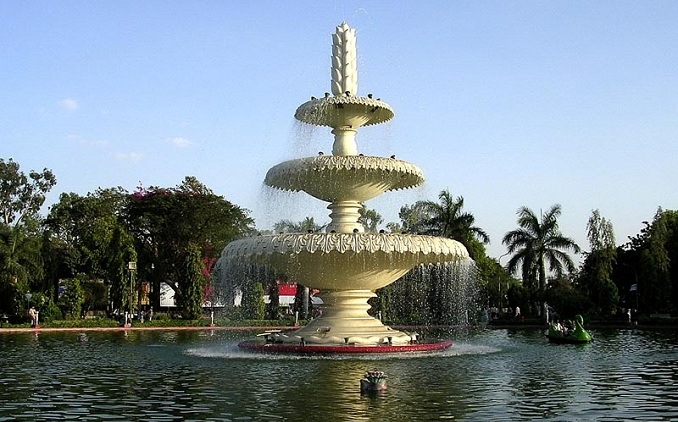Udaipur Day Tour
The city of lakes, Udaipur is a lovely land around the azure water lakes, hemmed in by the lush hills of the Aravalis. A vision in white drenched in romance and beauty. Udaipur is a fascinating blend of sights, sounds and experiences an inspiration for the imagination of poets, painters and writers. Udaipur is known as the Venice of the east. It is also called the city of lakes. The Lake Palace on Jag Niwas Island in the middle of Pichola Lakes is the finest example of its architectural and cultural explosion. The grand City Palace on the banks of the lake compliments the palace along with the Monsoon Palace (Sajjan Garh) on the hill above. Udaipur is also the centre for performing arts, craft and its famed miniature paintings. The Shilp Gram festival is a center of attraction during the season.City Palace
The history of the palace is tied to that of the Mewar kingdom, which had reached its heights near the territory of Nagda. The kingdom's founder was Guhil, who established the Maharana dominance in the year 568 AD. Subsequently, his successor Maharana Uday Singh II inherited the Mewar kingdom at Chittor in 1537, but the threat of losing control of the kingdom to the Mughals compelled him to move the capital to a region near Lake Pichola. Flanked by forests, lakes and the mighty Aravalli Hills, the new city of Udaipur was safe from invaders and went on to build the palace on the advice of a hermit. The first structure to be built here was the 'Rai Angan', from where on the construction of the complex was taken up with full vigour and finally completed in the year 1559. However, many changes were made to the then existing structure, which were spread over a period of 400 years. Rulers such as Udai Singh II added a few structures here, including 11 small separate palaces. Upon the Maharaja's death, his son Maharana Pratap succeeded him but was unfortunately defeated by Akbar at the Battle of Haldighati. Udaipur was overtaken by the Mughals but was returned to Maharana Pratap's son after Akbar's death. The increasing offences by the Marathas forced Maharana Bhim Singh to sign a treaty with the British, accepting their protection. The palace was under their control until Indian independence in 1947 and the Mewar Kingdom was merged with democratic India in 1949.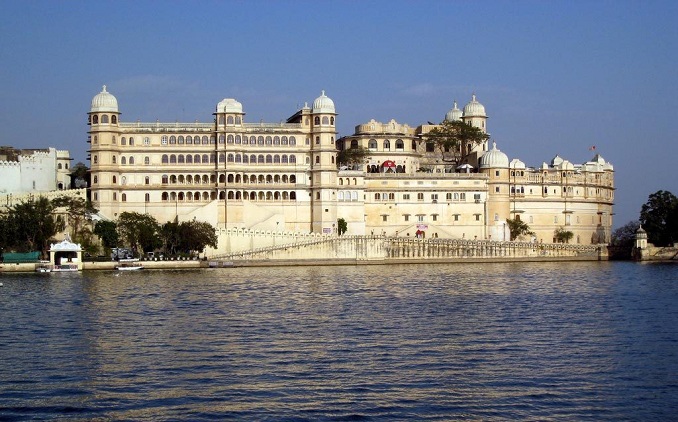
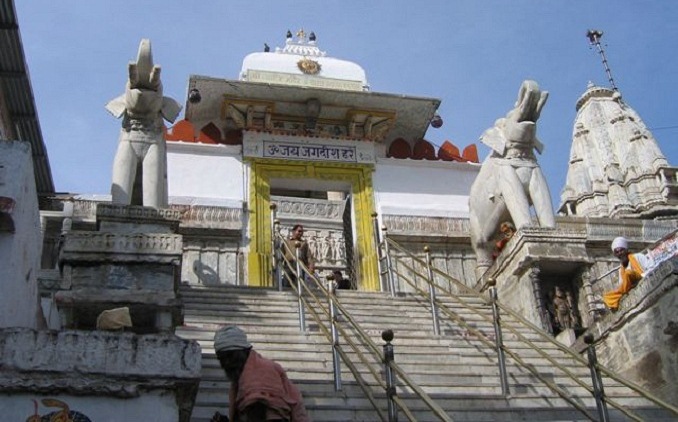
Jagdish Temple
Built in 1651A.D. by Maharana Jagat Singh, this indoarmy temple is the largest and the most beautiful temple if Udaipur with noteworthy sculpted images. Jagdish Temple is one of the famous temples of Udaipur. Located in the City Palace complex of Udaipur, this temple is made in the Indo-Aryan style of architecture. In 1651, Jagdish temple was built by Maharana Jagat Singh, who ruled Udaipur during 1628-53. The temple is dedicated to Lord Vishnu (Laxmi Narayan), the preserver of the Universe. It is celebrated for being the largest temple in the city of Udaipur. The gateway of this temple can be sited at a distance of 150 meters from the Bara Pol of the City Palace.Pichola Lake
Pichola Lake is one of the most beautiful and picturesque lakes of Rajasthan, India. Located in the heart of the city, Pichola Lake is the oldest and one of the largest lakes of Udaipur. In 1362, the beautiful lake was built by Pichhu Banjara during the ruling period of Maharana Lakha. Talking about the dimensions of Pichhola Lake, it is extended to 3 miles in length, 2 miles in width and has depth of 30 feet. The beauty of this lake has not separated anyone to attract towards it. The lake looks more enchanting with its scenic surroundings. Maharana Udai Singh must have been certainly captivated by the charm of this pristine lake with the perfect backdrop of lush green hills as when he founded the city of Udaipur, he enlarged this lake. He also constructed a dam made in stone that falls under the 'Badipol' region on the shore of this lake. Pichola Lake is enveloped by lofty Palaces, temples, bathing ghats and elevated hills on all its sides. In the southern part of this lake, there is a hill that is known as Machhala Magra and one can see glimpse of Eklinggarh Fort from here. The City Palace of Udaipur broadens along the eastern banks of this lake. Built by Jagat Singh, Mohan Mandir is situated in the north-east corner of Lake Pichola. Lake Pichola comprises several islands that accompany the calm waters of the lake. The world-renowned Lake Palace is perfectly located on the Jag Island of this tranquil lake. Even the Jag Mandir, another destination of tourists, is located on an island of this lake. Above all, a trip to Pichola Lake would be incomplete with a boat ride. The pristine blue waters of the lake leave a soothing impact on the spectator. At the time sun-set, a boat ride in this lake is sufficient to enthrall anyone. Rudyard Kipling mentioned this lake in his Letters of Marque (1899), "If the Venetian owned the Pichola Lake, he might say with justice, `see it and die'". The beauty of Lake Pichola attracts people from all over the world. One can undeniably say for Pichola that once, if you see this lake, you would definitely fall in love with it. The mesmerizing beauty of Lake Pichola makes it worth visiting during your visit to Udaipur.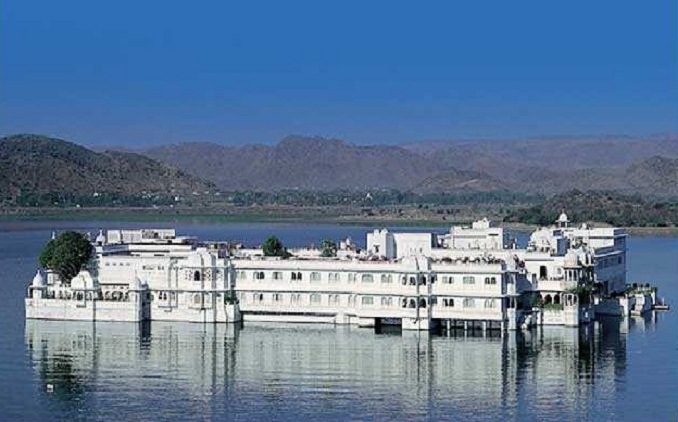
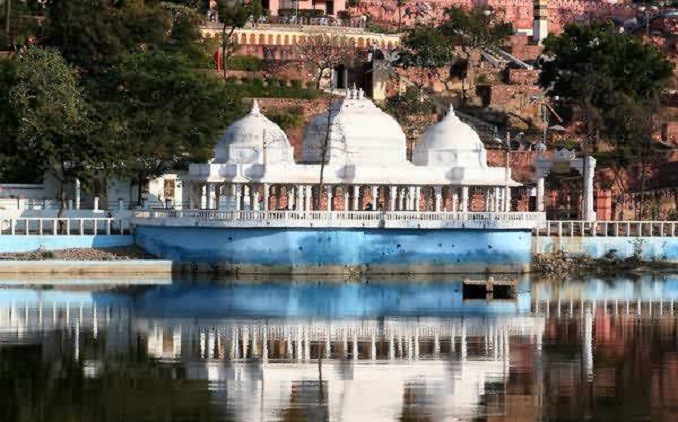
Dudh Talai Lake
Dudh Talai is a one of the most beautiful place in City udaipur. Dudh Talai is another tourist attraction of City Udaipur. Dudh Talai is a small lake that adores the south-east direction of Pichola Lake. Located in the southern side of Shiv Niwas Palace, the stream adds to the picturesque triangle with Pichola on one side, Dudh Talai on the second and M.L Verma Garden on the third. The Manikya Lal Verma Garden built on Machala Magra hill near Dudh Talai pond is a paradigm of contemporary architectural art.Gulab Bagh
Spread over an area of 100 acres, Gulab Bagh Zoo is a must visit place for all the fauna lovers as it is one of the largest gardens in Udaipur. There are numerous things within the garden like Lotus Pond, and many prominent trees i.e. mango, guava, grapes, lemon, boar, mulberry, Rayan, pomegranate, bananas, sapota, tamarind, bullock's heart (ramphal), litchi, aging trees, wood apple, karonda, camper, citron, gammon, pomelo, Meethaneem, Karachi lime, ficus species, Anola, jack fruit, dhanverjia, ground flora, Jasmin, Dawood etc. There is a zoo as well within the area of Gulab Bagh which is home to various rare species of animals including animals like Black Leopards, Rhinos, Ostriches, Zebras, hoolock gibbons, etc.
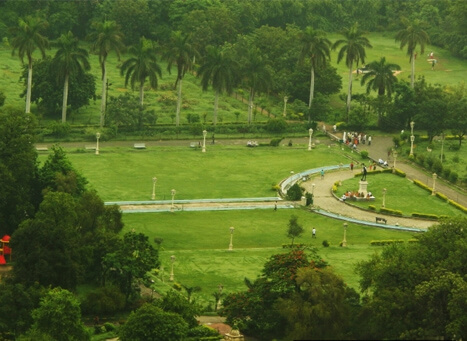
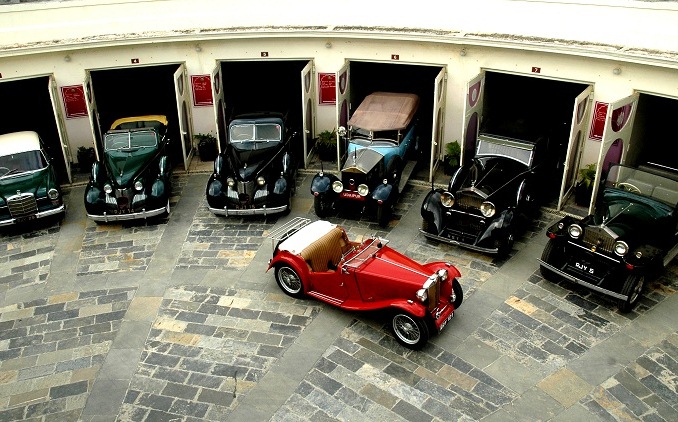
Vintage Car Collection
A unique private collection of vintage cars of the House of Mewar – the world’s longest serving dynasty. The Vintage & Classic Car Collection is a landmark in the city of Udaipur ever since it was inaugurated in February 2000. The grand limousines and cars showcased in the Collection belong to the House of Mewar and are still in perfect running condition. Visitors are privy to the display of the magnificent Rolls-Royce, 1939 Cadillac open convertibles, rare Mercedes models, 1936 Vauxhall and 1937 Opel modelsSaheliyon Ki Bari
Saheliyon Ki Bari is one the most beautiful gardens and a major tourist destination in Udaipur. The garden is famous for its lush green lawns, marble art and fountains. English translation of Saheliyon Ki Bari means "Garden of maids". This renowned garden is located on the banks of Fateh Sagar Lake, presenting a green retreat in the dry lands of Rajasthan. Garden of maids was built in the 18th century by Maharana Sangram Singh for the royal ladies. As per the legends, the garden was designed by the king himself and he presented this garden to his queen. Actually, the Queen was accompanied by 48 maids in her marriage. To offer all of them, pleasurable moments away from the political intrigues of the court, this garden was made. This patterned garden used to be the popular relaxing spot of the royal ladies. The queen with her maids and female companions used to come here for a stroll and spend their time in leisure.
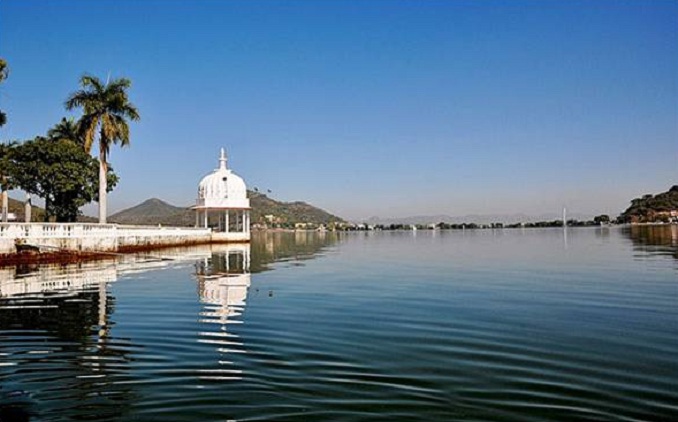
Sukhadia Circle
Sukhadia Circle, also known as Sukhadia square, is a majestic turn around in Panchwati, the Udaipur city’s northern suburb. It is a popular landmark in Udaipur and provides a beautiful view with the illumination of lights.Bhartiya Lok Kala Museum
Bhartiya Lok Kala Museum is one of the most famous museums of Udaipur, exhibiting the brilliant collection of folk articles of Rajasthan. This rare compilation varies from typical rural-dresses, ornaments, puppets, masks, dolls, folk musical instruments, folk deities and paintings. The museum is comfortably located in the building of Bhartiya Lok Kala Mandal near Chetak Circle in Udaipur city. Mewar region of Rajasthan is known for its rich art and culture. Actually, the local handicrafts and things of art of this region have always been cherished all over the world. With the intention to maintain this rich tradition, Bhartiya Lok Kala Mandal took the initiative, to start an institution, to encourage the local arts and crafts of Mewar. Bhartiya Lok Kala Museum is a part of their program that displays the best art and craft of Mewar.